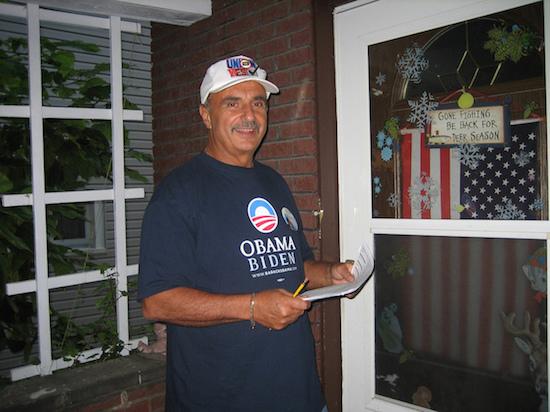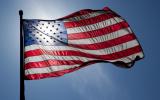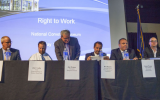Unions <3 Citizens United

Big labor and big business benefit
By Olivia Grady
Congress passed the Bipartisan Campaign Reform Act (also known as McCain-Feingold) in 2002, which tried to regulate campaign contributions from wealthy individuals and corporations. Section 203 of the Act specifically prevented corporations and labor unions from funding political ads from their general treasuries.
Conservative political advocacy group Citizens United challenged the constitutionality of the ad restriction in December 2007. The U.S. District Court for the District of Columbia ruled in favor of the Federal Election Commission, and Citizens United appealed.
The U.S. Supreme Court decided Citizens United v. Federal Election Commission on January 21, 2010. Justice Anthony Kennedy wrote the majority opinion. The Court ruled that the First Amendment prohibits limits on corporate funding of independent campaign ads in elections. However, unions and corporations are still forbidden from making direct contributions to candidates.
The effect of this case has been greater political spending by unions:
How does Citizens United affect this campaign season?
According to the Wall Street Journal, unions are spending 38 percent more on elections this year. Just from January 2015 through the end of August 2016, unions have spent about $108 million on campaigns.
This amount is much higher than in 2008 and 2012. Unions spent about $59 million in 2008 and about $78 million in 2012. The Center for Union Facts found that 99 percent of union political contributions went to Democrats from 2012 to 2014.
The AFL-CIO alone has spent $11.4 million this election cycle, up from $5 million in 2012. The National Education Association (NEA) spent $7.7 million in 2012, but has spent $14 million this campaign season.
The Federal Election Commission reports that unions have contributed $11 million to Clinton’s allied super PAC (Priorities USA Action) alone. $4 million was from the Laborers’ International Union of North America and its PAC. In addition, the United Brotherhood of Carpenters and Joiners and the primary union for plumbers and pipe fitters have each contributed $2 million.
Of concern to union leadership is the fact that many union members support Trump this election, unlike previous cycles where they have supported Democrat candidates. And, many of these voters are in battleground states, such as Pennsylvania and Ohio.
In addition to spending money, unions are also hosting rallies and door-knocking events. For example, on October 15, the presidents of several public employee unions, including the NEA, held a rally for Hillary Clinton and Senate Democrat candidate Katie McGinty in Philadelphia. Afterwards, hundreds of union members descended upon the city for the candidates.
At the rally, AFSCME President Lee Saunders said that union members would be “looking people dead ass in the eye and telling them about the importance of this election.”
At another rally in Parma, Ohio last week, union leaders urged the members of the state’s building-trades labor unions to vote for Clinton. In contrast with other labor union membership, membership is about half Republican in Ohio. Union leaders used the occasion to praise Clinton’s plan to raise the minimum wage and invest in infrastructure. They criticized Gov. Mike Pence for his support of right-to-work and talked about Trump not paying business owners.
The AFL-CIO and environmentalist Tom Steyer’s super PAC also persuaded about 150 union members to talk to voters for Clinton on that Saturday. The super PAC is called For Our Future, and it has knocked on more than one million doors in Ohio alone and raised $60 million this election.
In addition, on October 18, 2016, the AFL-CIO released a statement saying that the union planned to knock on one million doors for Clinton in key states: Florida, Missouri, Nevada, North Carolina, Ohio, Pennsylvania and Wisconsin. They also plan to contact voters by phone and mail (almost two million pieces of mail).
In the statement, President Richard Trumka threatened:
“This is the peak of our political program. Together we will elect Hillary Clinton as the first woman president, and work with her administration to rewrite the economic rules so that working people can get ahead and stay ahead.”
Unions have not neglected television advertisements either. On October 19, 2016, before the final presidential debate, the Service Employees International Union (SEIU) ran a Spanish language ad on Univision and Telemundo. It played an audio of Trump discussing his plan to build a wall on the U.S.- Mexico border. This ad was part of a wider $3 million ad campaign sponsored by the SEIU in Southern Florida and Nevada.
All of this money and activity by unions has helped Democrats win elections. According to Harry Enten, a senior political writer and analyst for FiveThirtyEight in 2012:
“Obama would have lost 1.4 percentage points off his vote share in 2012 without unions. Instead of his margin of victory over Romney being 3.9 percentage points, it would have been 1.1 points.”
This union network that can be tapped into is a tremendous asset to Democrats that Republicans don’t have. There are no comparable organizations for Republicans. While businesses may donate to conservative PACs, they don’t hold rallies or strongly “encourage” their workers to volunteer for Republican candidates. Even comparing Americans for Prosperity (AFP), a conservative political advocacy group, to unions, AFP is only contacting five million voters, much fewer than the unions are contacting. And, AFP is only helping down ballot candidates, not Trump.
Unions therefore benefit more from Citizens United than big business as Watchdog.org reported:
“’When it comes to writing big checks to favored candidates and causes, unions last year seemed to be taking greater advantage of the landmark Citizens United decision than corporations,’ said Jacob Fenton, an editorial engineer for the Sunlight Foundation.”
And the AFL-CIO agrees. Despite its official policy statements to the contrary, lawyers for the union submitted a brief in Citizens United, asking the Court to find the ad restrictions unconstitutional.





